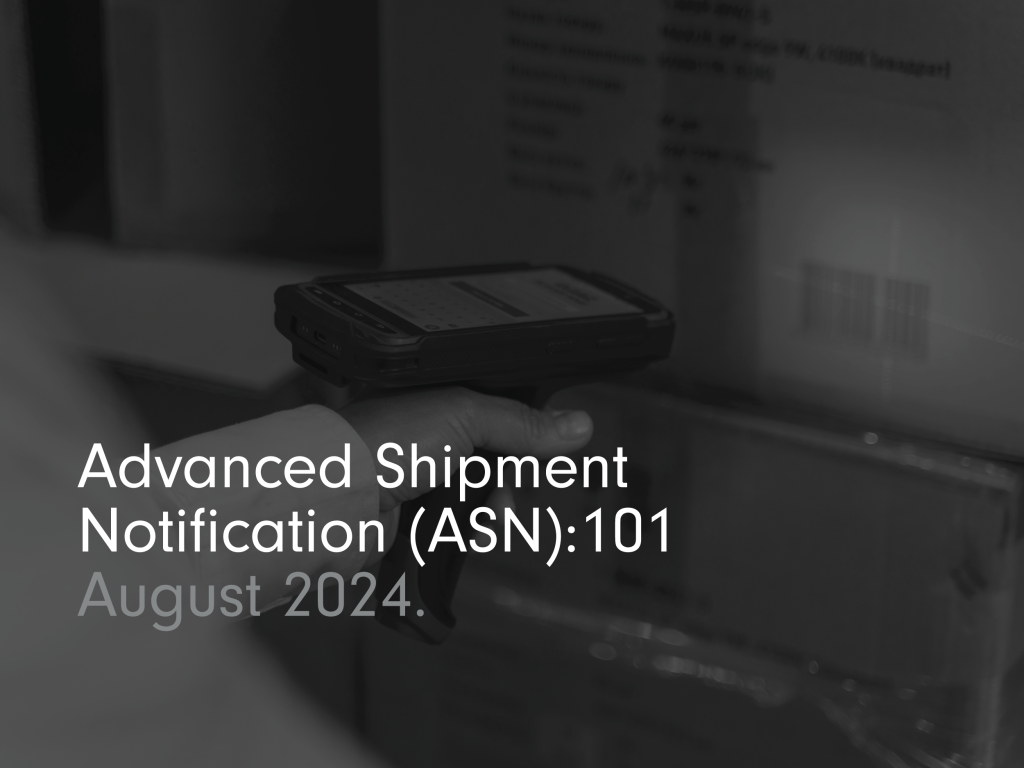Advanced Shipment Notification (ASN): 101

Today’s businesses rely heavily on supply chains. Yet, many struggle with productivity, especially in the UK where growth has been slow. A potential fix is ASN receiving, part of warehouse management systems that changes how goods are received, improving efficiency. This blog post will dive into ASN receiving, how it works in supply chains, and its benefits for those in logistics and supply chain management.
Understanding ASN Receiving.

What is ASN Receiving?
ASN receiving stands for Advanced Shipping Notice receiving, an efficient method of managing incoming shipments. The Advanced Shipping Notice is an electronic alert about a delivery that is coming soon.
It is usually sent through Electronic Data Interchange (EDI 856). The notice provides important details about the shipment. This includes the items being delivered, their quantities, weights, packaging types, and other features. The ASN helps the recipient get ready for the arrival of the goods.
The Advanced Shipping Notice is a digital heads-up for an upcoming delivery, typically sent via Electronic Data Interchange (EDI 856). It gives you key info about your shipment, like what items are coming, how many, their weights, how they’re packed, and more. Essentially, it makes sure you’re prepped and ready for when the goods arrive.
Imagine a retail clothing stockist receiving a shipment with garments in various colors and sizes. With traditional methods, each item would need to be individually checked—a time-consuming process. However, with ASN, all details are provided upfront, streamlining the receiving process significantly.
The Mechanism of ASN Receiving.

Once a vendor generates an ASN, they attach bar code labels to the boxes, crates, or pallets being shipped. The ASN is sent via EDI to the purchaser, often a central buying operation, which then forwards it to its retail outlets if applicable. Upon receiving the shipment, the retailer simply scans the bar code label. This automatically matches the shipment with the previously received ASN.
In a single scan, the entire purchase order is verified without the need to manually check each product. Scanning the ASN track and trace number brings up all necessary details, enabling quick booking of the goods.
Productivity Benefits of ASN Receiving.

Streamlining the Receiving Process.
Booking in goods traditionally involves manual validation of shipments, which can be labor-intensive. ASN receiving transforms this process, particularly when dealing with trusted trading partners who hold Authorised Economic Operator (AEO) status. This status enhances trust within the supply chain, allowing businesses to confidently scan a barcode and book in shipments.
The ASN scanning process speeds up shipment verification by quickly matching product details and checking batch numbers. This efficiency reduces the time needed for manual booking, leading to faster operations and increased productivity.
ASNs give clear info on when deliveries will arrive, letting warehouses plan their staffing accurately. This advance notice helps use resources efficiently, avoiding delays and cutting down on waiting times. For big retailers like Tesco and B&Q, getting them is key. Without them, manually handling deliveries would really slow things down.
Cost Savings.
Time savings translate directly into cost reductions. Our appraisal suggests that ASN receiving can save time by a factor of four or five. According to Supply Chain Digest, ASN receiving can reduce receiving costs by up to 40%, offering a substantial competitive advantage for businesses.
Constraints and Considerations.

Ensuring Accuracy and Trust.
While ASN receiving offers numerous benefits, it requires a high level of confidence that the goods received match the anticipated delivery. This challenge is mitigated by working with trusted partners and leveraging EDI standards. AEO certification further bolsters this trust, reducing the risk of discrepancies between expected and received goods.
Adding ASN receiving to your operations needs strong EDI and warehouse management systems. These help manage electronic notifications easily, letting goods be quickly processed with a simple barcode scan.
Conclusion
ASN receiving is a powerful tool for any organization looking to enhance productivity in their supply chain. By streamlining workflows and providing detailed information on shipments, ASN receiving helps businesses lower costs and improve efficiency.
Logistics and supply chain experts can gain an advantage in the competitive market by using ASN receiving. Using technology effectively helps supply chains stay flexible and responsive to the needs of modern business.
To really get how ASN receiving can transform your supply chain, it’s smart to work with industry experts and stay on top of the latest in electronic data interchange and order management systems. Doing this will keep your business at the forefront of innovation, driving growth and efficiency.
Frequently Asked Questions.
ASN receiving aims to streamline the process of managing incoming shipments by providing advance notifications of deliveries, thus enhancing efficiency and accuracy in inventory management.
Implementing ASN receiving necessitates robust Electronic Data Interchange (EDI) and warehouse management systems. These technologies facilitate the seamless sharing and processing of electronic notifications.
ASN receiving offers detailed information about expected delivery times and shipment contents, allowing businesses to allocate personnel effectively and reduce bottlenecks in the warehouse.